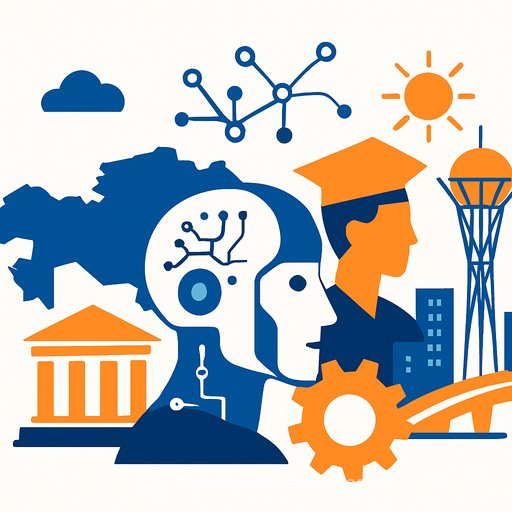Kazakhstan sets clear AI agenda: institutions, infrastructure, and talent
At the first meeting of the Council for Artificial Intelligence Development in Astana, Minister Zhaslan Madiyev laid out how Kazakhstan will implement AI across the country. The plan focuses on three pillars: building strong institutions, scaling infrastructure, and strengthening human capital.
Why this matters for HR
This is a signal to HR leaders: AI skills, policies, and new operating models will soon be a baseline expectation across organizations in Kazakhstan. Hiring, training, and workforce design need to adjust now to keep pace with national initiatives.
Institutional and policy moves
A new Ministry of Artificial Intelligence and Digital Development has been established as the cornerstone of the governance model. A draft AI law is under Parliamentary review to set legal and ethical rules for how AI is used in the country.
For HR, this means compliance, data privacy, and responsible use policies will need updates. Use recognized standards such as the OECD AI Principles as a reference point while local regulations take shape.
Infrastructure you can build on
In July, the national supercomputing center Alem.Cloud went live, the largest cluster in Central Asia. Kazakhstan also launched its first national language models - KazLLM and Alem LLM - and a national AI platform that provides data, compute, and access to large language models.
The platform enables creating AI agents without programming skills. HR teams can pilot internal assistants for recruiting, onboarding, knowledge search, and policy Q&A in Kazakh and Russian.
New collaboration hub
The International Alem AI Center is scheduled to open on October 2, 2025. It will bring together experts, innovators, and government representatives to accelerate practical solutions across sectors - a valuable partner for enterprise HR and L&D leaders.
Human capital is the priority
The government is putting strong emphasis on talent development as the key success factor. That aligns with what HR controls: skills mapping, learning programs, and workforce planning.
7 practical moves HR can make now
- Run a role and task audit to spot where AI can augment work (screening, scheduling, reporting, knowledge retrieval).
- Launch tiered AI literacy programs: foundational for all, tool fluency for managers, and advanced for data/automation roles.
- Update policies for responsible AI use, privacy, data security, and human oversight in decisions.
- Create prompt and data usage guidelines that reflect the upcoming national AI law and internal risk appetite.
- Pilot no-code AI agents using the national platform for HR workflows (candidate screening notes, onboarding checklists, benefits FAQs).
- Recruit for new capabilities: AI-savvy HRBPs, people analytics specialists, and automation project leads.
- Partner with the International Alem AI Center and local universities for co-ops, upskilling, and research-to-practice projects.
High-impact HR use cases to test
- Recruitment: multilingual CV screening summaries, interview question banks, and structured feedback templates.
- Internal mobility: skills extraction from resumes and role-matching suggestions aligned to business demand.
- Knowledge access: private, language-specific HR policy assistants for employees and managers.
- L&D: adaptive learning paths based on skills gaps; micro-learning content generated in Kazakh and Russian.
- Compliance: policy comparison, change tracking, and audit-ready documentation summaries.
Upskilling your team
Build a clear capability map for AI in HR: data literacy, prompt quality, workflow design, vendor evaluation, and change management. For structured learning paths by job role, explore AI courses by job.
Bottom line: Kazakhstan is creating the conditions for scaled AI adoption - institutions, compute, and tools. HR now has a window to prepare people, policies, and processes so teams can use these resources responsibly and effectively.
Your membership also unlocks:






